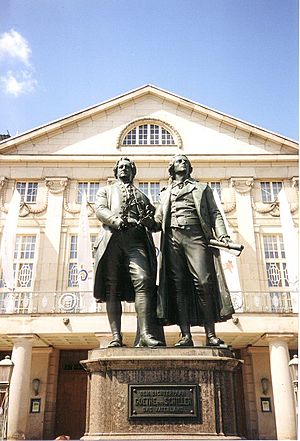National symbol facts for kids
A national symbol is a symbol of any entity considering and manifesting itself to the world as a national community: the sovereign states but also nations and countries in a state of colonial or other dependence, federal integration, or even an ethnocultural community considered a 'nationality' despite having no political autonomy.
National symbols intend to unite people by creating visual, verbal, or iconic representations of the national people, values, goals, or history. These symbols are often rallied around as part of celebrations of patriotism or aspiring nationalism (such as independence, autonomy,or separation movements) and are designed to be inclusive and representative of all the people of the national community.
Common official national symbols
- The flag or banner of a nation-state
- The coat of arms of the land or ruling dynasty
- The seal or stamp of the land or ruling dynasty
- The head of state, especially in a monarchy
- The associated device and motto can also be used separately
- The national colors, often derived from the above
- Abstract symbols
- National anthems, royal and imperial hymns; alongside such official hymns custom may also recognize the national symbol values of very popular songs
Some official national symbols like seals are insignias that not everybody is allowed to use.
Unofficial national symbols

In many ways, well-known sights in a country can also be seen as national symbols, as can traditional items of handicraft, folk costumes, natural monuments, national epics and national myths, as well as symbols used by national sports teams and their supporters.

See also
 In Spanish: Símbolo nacional para niños
In Spanish: Símbolo nacional para niños
- Lists of national symbols
- Cultural icon
- Floral emblem
- National cockade
- Religion in national symbols

